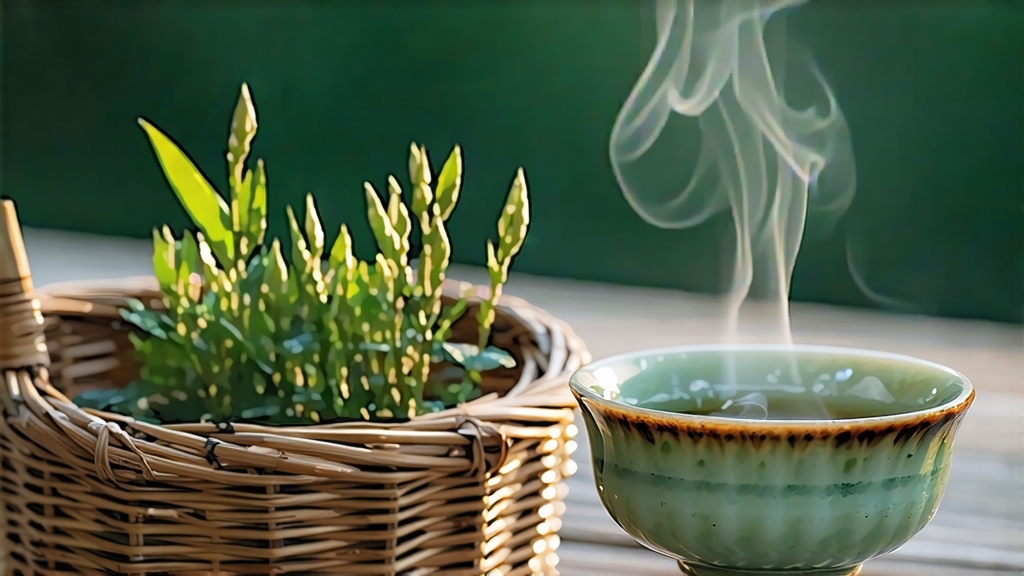
Tucked high on the mist-laden shoulders of Mt. Meng in Sichuan Province, a tea once reserved for Tang-dynasty emperors still quietly unfolds its buttery-sweet fragrance each April. Meng Ding Huang Ya—literally “Yellow Bud from the Summit of Meng”—is the least-known yet most aristocratic member of China’s yellow-tea family. While green tea commands global fame and pu-erh fills investment portfolios, yellow tea lingers in semi-obscurity, its production so micro-scale that even inside China fewer than one farmer in a thousand has ever handled a genuine batch. To encounter Meng Ding Huang Ya is therefore to taste a living fossil, a beverage whose very colour evokes the imperial dragon robes of the eighth century.
History: From Tribute to Near Extinction
The first written record appears in 724 CE when the monk Wu Lizhen planted seven tea bushes on the summit, declaring the site “the cradle of celestial dew.” By 756 the tea was freighted down the Min River to Chang’an, where Emperor Xuanzong christened it “the first of all springs.” Annual tribute continued through Song, Ming and Qing, but the 1850s saw a precipitous decline. The intricate “men huan” (sealed yellowing) process demanded up to seven humid days in woven bamboo baskets—time most producers were unwilling to sacrifice when faster green-tea styles fetched equal coin. By 1958 only 3 mu (0.2 ha) of heirloom bushes remained. A state-sponsored restoration in the 1960s rescued the cultivar, yet even today total yearly output seldom exceeds 800 kg, making authentic Meng Ding Huang Ya rarer per capita than saffron.
Terroir: Where Clouds Polish the Leaf
Mt. Meng rises 1 450 m above the Chengdu plain, trapping a perennial cloud belt that blocks 30 % of direct sunlight. The resultant shade-grown chemistry boosts amino acids (especially L-theanine) to 4.2 % of dry weight—almost double that of lowland green teas. Night-time temperatures drop 10 °C, slowing respiration and locking in natural sugars. The soil is a crumbly quartz-rich yellow loam, pH 4.9, laced with manganese and zinc delivered by Sichuan’s frequent acid rain. Locals insist the mountain’s name—“Meng,” meaning misty drizzle—imbues each bud with the flavour of suspended water droplets.
Cultivar & Plucking Calendar
Only two clones are recognised as true Meng Ding germplasm: the ancient “Shiqian” shrub (small-leaf, slow budding) and the 1970s-selected “Meng Huang #9” (larger bud, higher yield). Picking begins when the dawn mist still clings to the ridge, usually between 5 a.m. and 8 a.m. from 1–5 April. Standard is “one bud with the unopened scale leaf,” 15–20 mm length, 0.3 g fresh weight. A skilled picker gathers just 200 g per hour; 45 000 buds—an entire day’s labour for five people—yield 1 kg of finished tea.
Craft: The Secret of Men Huan
Yellow tea’s defining step is “sealed yellowing,” a controlled re-fermentation that sits stylistically between green and light oolong. Meng Ding Huang Ya undergoes five sequential stages:
-
Green-Kill Out (Qing Sha)
Buds are tumble-panned for 180 s at 140 °C in iron woks brushed with Mt. Meng’s spring water. The goal is rapid enzyme deactivation yet moisture retention of 62 %, higher than green tea’s 58 %. -
Initial Roll & Cool (Chu Rou)
Light rolling for 6 min fractures cell walls without breaking the bud silhouette. Leaves are then spread 3 cm thick on hemp cloth to cool for 30 min; surface moisture equalises. -
First Yellowing (Men Huang I)
The critical “men huan” begins: buds are piled inside double-walled bamboo baskets lined with wet ramie. Core temperature climbs to 38 °C over 4 h; polyphenols oxidise just 5 %, enough to mute grassiness but preserve jade-green stems. -
Second Pan-Fire (Fu Shao)
A gentle 90 °C re-heat drives moisture